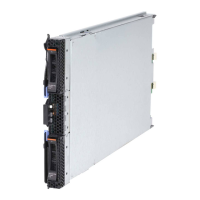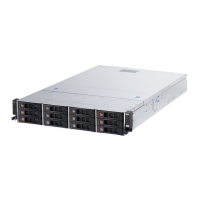v Customer support center 24 hours per day, 7 days a week.
1
v Customer-upgradeable Unified Extensible Firmware Interface (UEFI) code and
diagnostics
v ECC protection on the L2 cache
v Error codes and messages
v Integrated management module (IMM)
v Light path diagnostics
v Memory parity testing
v Registered ECC DDR3 memory
v Microprocessor built-in self-test (BIST) during power-on self-test (POST)
v Microprocessor serial number access
v PCI PMI 2.2
v PCI Express 1.0a
v POST
v ROM-resident diagnostics
v Service processor that communicates with the advanced management module to
enable remote blade server management
v System-error logging
v Wake on LAN capability
v Wake on PCI (PME) capability
v Wake on USB 2.0 capability
IBM Systems Director
IBM Systems Director is a platform-management foundation that streamlines the
way you manage physical and virtual systems in a heterogeneous environment.
By using industry standards, IBM Systems Director supports multiple operating
systems and virtualization technologies in IBM and non-IBM x86 platforms.
Through a single user interface, IBM Systems Director provides consistent views
for viewing managed systems, determining how these systems relate to one
another, and identifying their statuses, helping to correlate technical resources with
business needs. A set of common tasks that are included with IBM Systems
Director provides many of the core capabilities that are required for basic
management, which means instance business value. These common tasks include
discovery, inventory, configuration, system health, monitoring, updates, event
notification, and automation for managed systems.
The IBM Systems Director web and command-line interfaces provide a consistent
interface that is focused on driving these common tasks and capabilities:
v Discovering, navigating, and visualizing systems on the network with the
detailed inventory and relationships to the other network resources
v Notifying users of problems that occur on systems and the ability to isolate
sources of the problems
v Notifying users when systems need updates and distributing and installing
updates on a schedule
v Analyzing real-time data for systems and setting critical thresholds that notify
the administrator of emerging problems
v Configuring settings of a single system and creating a configuration plan that
can apply those settings to multiple systems
1. Service availability varies by country. Response time varies depending on the number and nature of incoming calls.
Chapter 1. Introduction
11
